Foods Low in Phosphorus for People with Kidney Disease
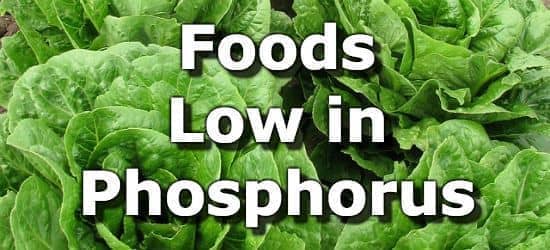
Phosphorus is an essential mineral that makes up around 1% of a person's body weight, most of which is in bones and teeth.
People with chronic kidney disease (CKD) typically have to restrict and monitor their intake of phosphorus. Most refined oils, fruits, vegetables, and refined grains are low in phosphorus. People should avoid eating meat, which typically contain more easily absorbed phosphorus than found in plants. Since meats are restricted in a CKD diet, egg whites can be a good low-phosphorus source of protein. Soymilk may also work.
The National Kidney Foundation cautions people with CKD to avoid preservatives and additives which use phosphorus. Phosphorus is added to a lot of foods, check ingredient labels for anything with the letters PHOS that includes:
- Dicalcium phosphate
- Disodium phosphate
- Monosodium phosphate
- Phosphoric acid
- Sodium hexameta-phosphate
- Trisodium phosphate
- Sodium tripolyphosphate
- Tetrasodium pyrophosphate
The list below is a sample of foods low in phosphorus that are also low in other minerals (sodium, potassium, etc...) typically restricted on a CKD diet.
Note: The current daily value (DV) for phosphorus is 1250mg. (1) This is a target meant for healthy people and is the %DV you will see on product labels in the United States. People with kidney disease should eat far less phosphorus. Please use the percent daily value in this article only as a guide to compare foods and not as a target!
List of Foods Low in Phosphorus
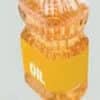 1 Refined Oils (Rice Bran Oil)
1 Refined Oils (Rice Bran Oil)| Phosphorus per Tblsp | Phosphorus per 100g | Phosphorus per 200 Calories |
|---|---|---|
| 0mg (0% DV) | 0mg (0% DV) | 0mg (0% DV) |
1 tbsp of rice bran oil contains 0mg of sodium, 0mg potassium, 0mg magnesium, and 0mg calcium.
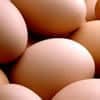 2 Egg Whites
2 Egg Whites| Phosphorus per Egg White | Phosphorus per 100g | Phosphorus per 200 Calories |
|---|---|---|
| 5mg (0% DV) | 15mg (2% DV) | 57.7mg (6% DV) |
1 egg white contains 55mg of sodium, 54mg potassium, 4mg magnesium, and 2mg calcium.
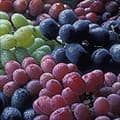 3 Grapes
3 Grapes| Phosphorus per Cup | Phosphorus per 100g | Phosphorus per 200 Calories |
|---|---|---|
| 9.2mg (1% DV) | 10mg (1% DV) | 29.9mg (3% DV) |
1 cup of grapes contains 2mg of sodium, 176mg potassium, 5mg magnesium, and 13mg calcium.
See all fruits low in phosphorus.
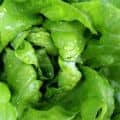 4 Lettuce
4 Lettuce| Phosphorus per Cup | Phosphorus per 100g | Phosphorus per 200 Calories |
|---|---|---|
| 10.4mg (1% DV) | 29mg (3% DV) | 386.7mg (39% DV) |
1 cup of shredded lettuce contains 10mg of sodium, 70mg potassium, 5mg magnesium, and 13mg calcium.
See all vegetables low in phosphorus.
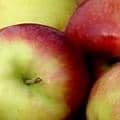 5 Apples
5 Apples| Phosphorus per Cup | Phosphorus per 100g | Phosphorus per 200 Calories |
|---|---|---|
| 13.8mg (1% DV) | 11mg (1% DV) | 42.3mg (4% DV) |
1 cup of apples contains 1mg of sodium, 134mg potassium, 6mg magnesium, and 8mg calcium.
See all fruits low in phosphorus.
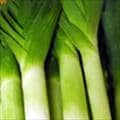 6 Leeks
6 Leeks| Phosphorus per Leek Cooked | Phosphorus per 100g | Phosphorus per 200 Calories |
|---|---|---|
| 21.1mg (2% DV) | 17mg (2% DV) | 109.7mg (11% DV) |
1 medium leek contains 12mg of sodium, 108mg potassium, 17mg magnesium, and 37mg calcium.
See all vegetables low in phosphorus.
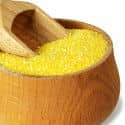 7 Cornmeal (Grits)
7 Cornmeal (Grits)| Phosphorus per Cup Cooked | Phosphorus per 100g | Phosphorus per 200 Calories |
|---|---|---|
| 32.6mg (3% DV) | 14mg (1% DV) | 43.1mg (4% DV) |
1 cup of cornmeal contains 5mg of sodium, 51mg potassium, 12mg magnesium, and 2mg calcium.
See all grains low in phosphorus.
 8 Shiitake Mushrooms
8 Shiitake Mushrooms| Phosphorus per Cup Cooked | Phosphorus per 100g | Phosphorus per 200 Calories |
|---|---|---|
| 42.1mg (4% DV) | 29mg (3% DV) | 103.6mg (10% DV) |
1 cup of shiitake mushrooms contains 6mg of sodium, 170mg potassium, 20mg magnesium, and 4mg calcium.
See all vegetables low in phosphorus.
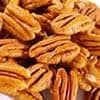 9 Pecans
9 Pecans| Phosphorus per Oz | Phosphorus per 100g | Phosphorus per 200 Calories |
|---|---|---|
| 78.7mg (8% DV) | 277mg (28% DV) | 80.2mg (8% DV) |
1 oz of pecans contains 0mg of sodium, 116mg potassium, 34mg magnesium, and 20mg calcium.
See all nuts low in phosphorus.
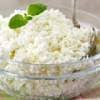 10 Low-Fat Cottage Cheese
10 Low-Fat Cottage Cheese| Phosphorus per Oz | Phosphorus per 100g | Phosphorus per 200 Calories |
|---|---|---|
| 151.4mg (15% DV) | 134mg (13% DV) | 372.2mg (37% DV) |
1 oz of cottage cheese contains 115mg of sodium, 17mg potassium, 1mg magnesium, and 17mg calcium.
About the Data
Data for the curated food lists comes from the USDA Food Data Central Repository.
You can check our data against the USDA by clicking the (Source) link at the bottom of each food listing.
Note: When checking data please be sure the serving sizes are the same. In the rare case you find any difference, please contact us and we will fix it right away.
About Nutrient Targets
Setting targets can provide a guide to healthy eating.
Some of the most popular targets include:- Daily Value (%DV) - The daily value (%DV) is a general guideline for consumption that will prevent deficiency of a particular nutrient in most people. The %DV refers to the percentage of an amount that's found in a single serving of a food. It also accounts for absorption factors. It is set by the U.S. FDA.
- Recommended Dietary Allowance (%RDA) - The RDA sets an average daily dietary intake level that is sufficient to meet the nutrient requirements of nearly all (97.5%) healthy individuals. It's more specific than the daily value, and varies by age and gender. The RDA is set by the US National Institutes of Health.
- Reference Dietary Intake (%RDI) -The reference dietary intake is similar to the recommended daily allowance, but is specific to age and gender. The RDI for amino acids is set by the U.N. World Health Organization.
- Adequate Intake (%AI) - This value is primarily used in reference to omega-3 and omega-6 fats. The Adequate Intake is set by the U.S. Institute of Medicine. Because there is less evidence to determine the ideal targets for consumption of these nutrients, the specific amount is considered to be less reliable. Using the term Adequate Intake, rather than one of the other terms, helps to emphasize that the ideal intake of that particular nutrient has not yet been scientifically determined.
See the Guide to Recommended Daily Intakes for more information.
Want to set your own targets? Sign up for an account and set custom targets in the daily meal planner.From the Nutrient Ranking Tool
Use the ranking tool links below to select foods and create your own food list to share or print.
- Foods High in Phosphorus
- Foods Low in Phosphorus
- Vegetables High in Phosphorus
- Fruits High in Phosphorus
- Vegetarian Foods High in Phosphorus
- Nuts High in Phosphorus
- Grains High in Phosphorus
- Beans High in Phosphorus
- Dairy High in Phosphorus
- Breakfast Cereals High in Phosphorus
- Fast Foods High in Phosphorus
View more nutrients with the nutrient ranking tool, or see ratios with the nutrient ratio tool.
Related
Data Sources and References
Try the recipe nutrition calculator, or daily meal planner.
Create a free account to log and track foods.
